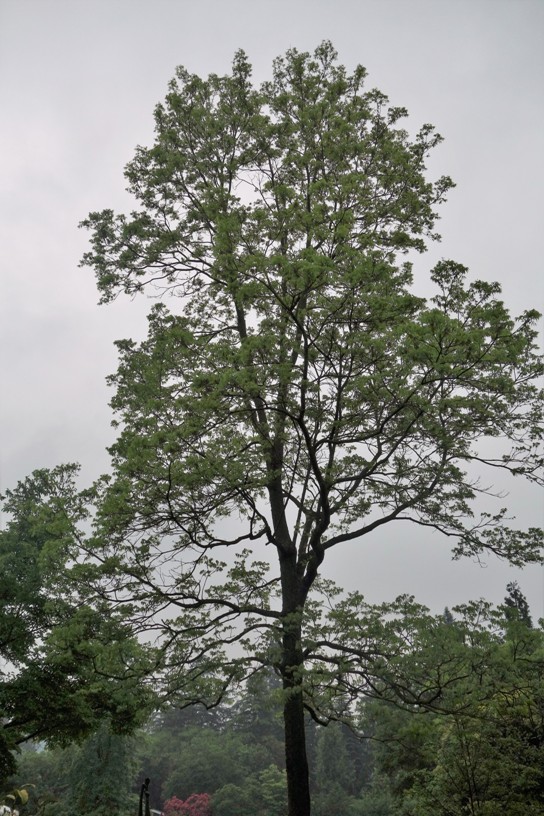Pecan
Carya illinoinensis
Walnut family (Juglandaceae)
Nuts for three centuries
Not everyone will immediately recognize this tree but they will certainly be familiar with its fruit. The pecan tree originates from the southern United States where it is still widely planted. The extensive root system helps negate erosion whilst the wood derived from this 50 m tall tree is very strong and used for parquet flooring. The oil extracted from the shell of the fruit is an important ingredient in the cosmetic industry. But the most familiar of all are the pecan nuts themselves. The elongated nut has grooves reminiscent of the walnut, which is a member of the same family. Moreover planting a pecan plant has always been a good investment as one tree can produce nuts for up to three hundred years.
Themes
Crown jewel in the Kerkrade Botanic Garden.
Rarely seen outside its native range. State tree of Texas.
First fossil examples of this family appear during Cretaceous. Native people of USA have been using pecan nuts (althugh the term 'drupe' is more correct) for 8000 years. The Spaniards brought the Carya illinoinensis to Europe, Asia and Africa in the 16th century. Commercial growing of the trees started in 1880.
The sweet pecan were eaten raw by colonial Americans as a delicacy. In the USA the nuts (they are in fact drupes rather than nuts) are used in pecan pie, chocolate and sweets. The 'milk' derived from the nuts can also be used to thicken soups. The nuts can also be roasted and eaten or used to decorate cakes, chocolates and ice cream. The nuts are consumed worldwide. The leaves can be used to make tea and the oil is used in the cosmetic industry as a pigment and in soap.
Details
| Description: | Tree, 20-40 (50) m; both sexes can occur on the same tree leading to some degree of self-pollination. |
|---|---|
| Distributions: | North america |
| Habitat: | Subtropics under high rainfall (2010 mm per year), on well drained, heavy alluvial, humus-rich, loamy soil in full sun. |
| Year cycle: | Perennial (polycarpic decidous) |
| Hardiness: | Colder than -4 f (very hardy) |
| Flowering period: | Mei - juni |
| Flower color: | Yellow, green |
| Notes on flowers: | Flowers are greenish-yellow. |
| Fruiting period: | Oktober - november |
| Fruit color: | Yellow, green |
| Notes on fruits: | Vlezige vruchtbolster 3-8 cm, 3 - 10 bijeen groen tot groen-geel. |
| At its best: | Mei, oktober |
Sources
Plantsdata base/Carya illinoinensis,http://www.missouribotanicalgarden.org/PlantFinder/PlantFinderDetails.aspx?kempercode=a852
